Focus on Nutrients: 2 Calcium and Phosphorus
9/6/16
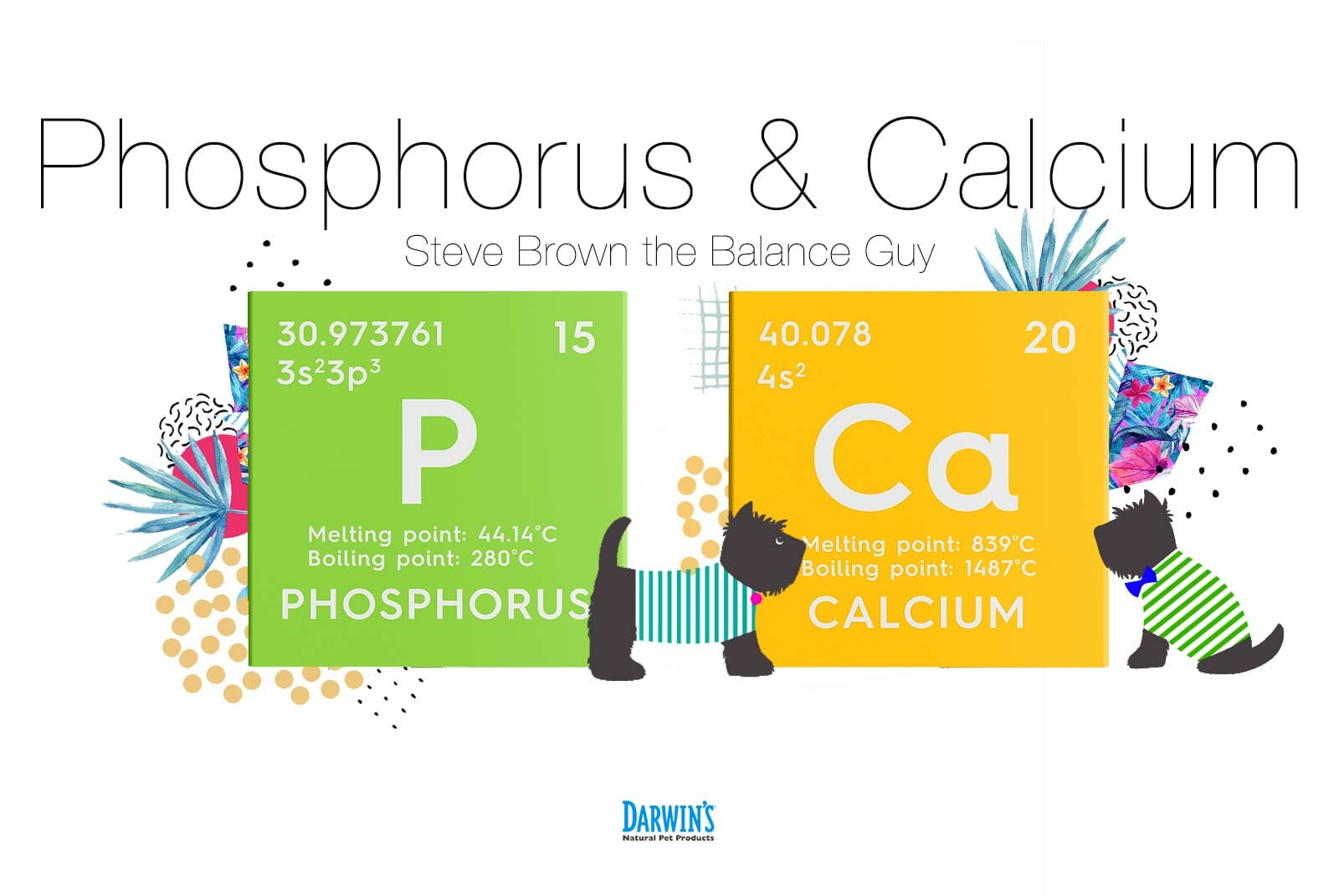

Calcium and Phosphorus
One of the worst mistakes I’ve see with homemade recipes and even some popular commercial raw diets is improper amounts of calcium (Ca) and especially phosphorus (P) when feeding puppies. The proper amounts of Ca and P are essential for healthy growth and strong bones and teeth.
So, how do you provide the proper calcium and phosphorus amounts in meat-based recipes without bone and for bone-in poultry meats? With bone-in meats, such as chicken necks or backs, since the parts we use have bone (Ca and P), meat and fat, I look at the macronutrient content (protein, fat), the fat balance, primarily LA, and the Ca and P at the same time.
Puppies vs. Adult Dogs
To support their growing bones, puppies need more calcium and phosphorus than adult dogs. Both the total amounts and the ratio between calcium and phosphorus are important in order to prevent growth abnormalities, especially in large-breed puppies.
Recipe makers must know how to provide proper calcium and phosphorus amounts and ratios for puppies if they claim their food meets AAFCO guidelines for growth or all life stages. Many seem not to understand this critical point.
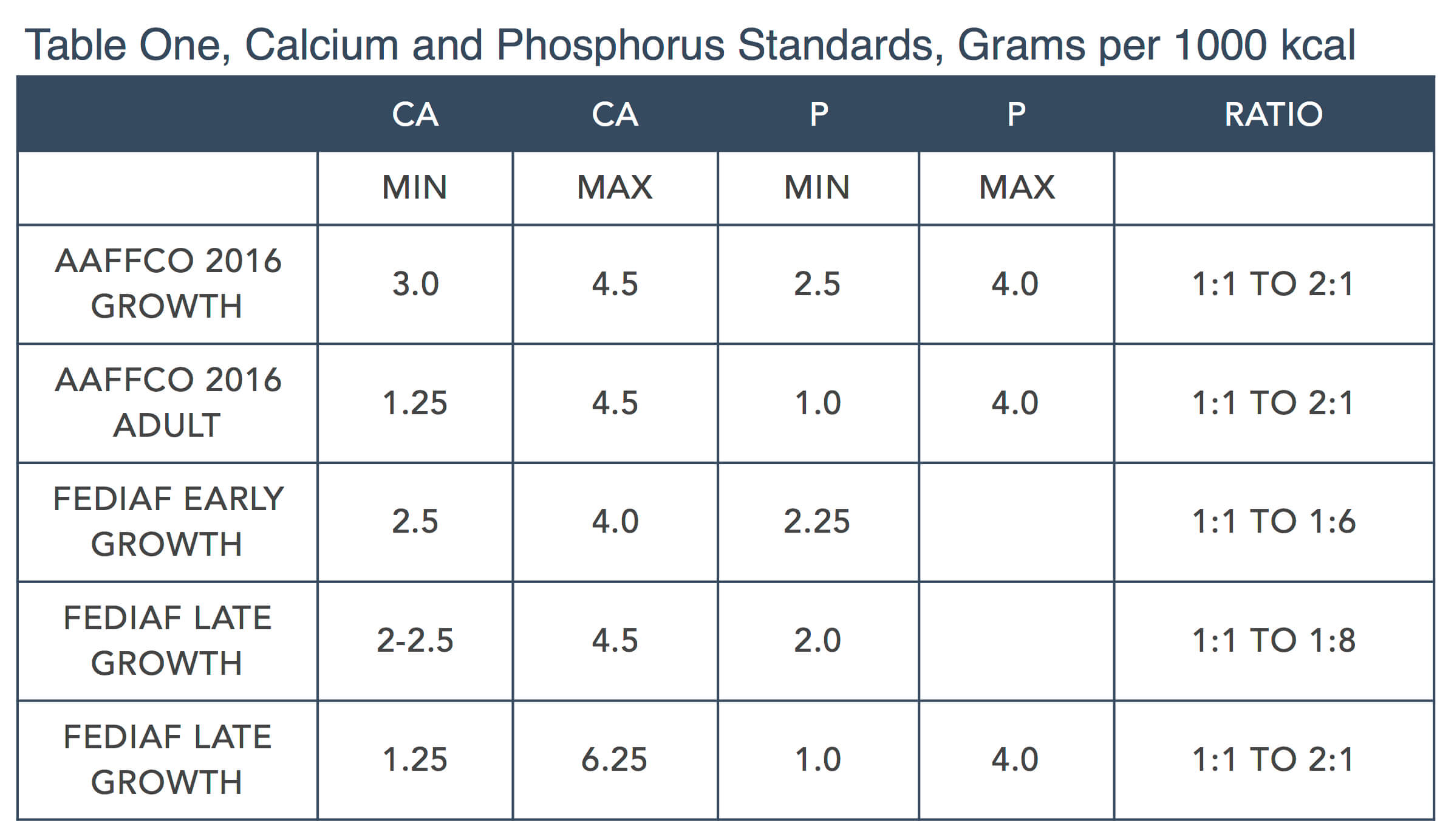
Meeting AAFCO Requirements
In order to meet AAFCO guidelines for growth, both calcium and phosphorus must be added to diets that do not contain bone (bone provides both calcium and phosphorus). Meat contains phosphorus, however, even an all-meat diet does not provide sufficient phosphorus for growth stages.
Calcium-only supplements such as calcium carbonate, eggshell powder, coral calcium, and oyster shell powder will not suffice, as they do not provide the additional phosphorus required for proper growth. For adult dogs, if lean meats are used, Ca-only supplements will be fine.
This is a complex topic, made more difficult by the high variability in calcium and phosphorus content in typical ruminant bones (table 2).
Summary Meats
Summary meats without bone: calcium and phosphorus – bone meal, dicalcium phosphate, tricalcium phosphate, or calcium hydroxyapatite – must be added to boneless foods in order to meet American (AAFCO), European (FEDIAF), or ancestral growth guidelines for calcium and phosphorus (table 1).
For lean, ancestral-type diets, for example those recipes using 90% lean ground beef as a base, use ten grams of bone meal for every 1000 kcal. A typical 40-pound dog consumes about 1000 kcal per day, and 1.3 pounds of 90% lean beef contains about 1000 kcal.
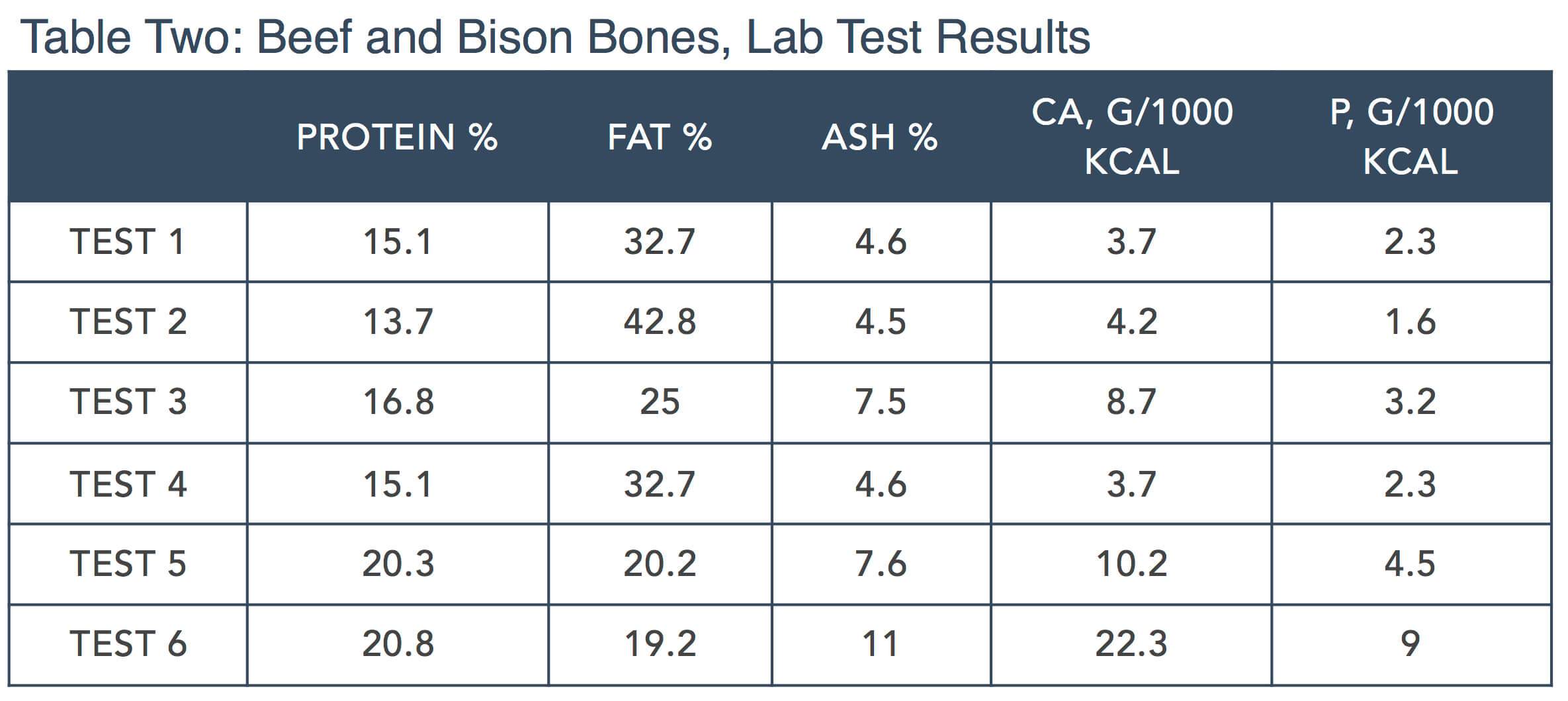
For adult maintenance, using 85% lean meats or leaner, a calcium-only source such as calcium carbonate, egg shell powders, and coral calcium is acceptable if and only if lean meats are used. Use 3 grams (a little less than 1 teaspoon for most sources) for every 1000 kcal.
Summary poultry meats with bone: for growth and adults, use a 50 / 50 / 50 guideline. 50% meat without bone, separable fat and skin removed (thigh ideal), 50% necks or backs with 50% of the skin and separable fat removed. With this guideline, your homemade foods should meet AAFCO and FEDIAF standards for Ca, P, total fat, and LA. If you do not remove ½ the fat and skin from the necks or backs, chances are the diet will contain too much LA, which can be pro-inflammatory. If you use more necks and less boneless meat, chances are the diet will exceed AAFCO and FEDIAF maximums for Ca and P.
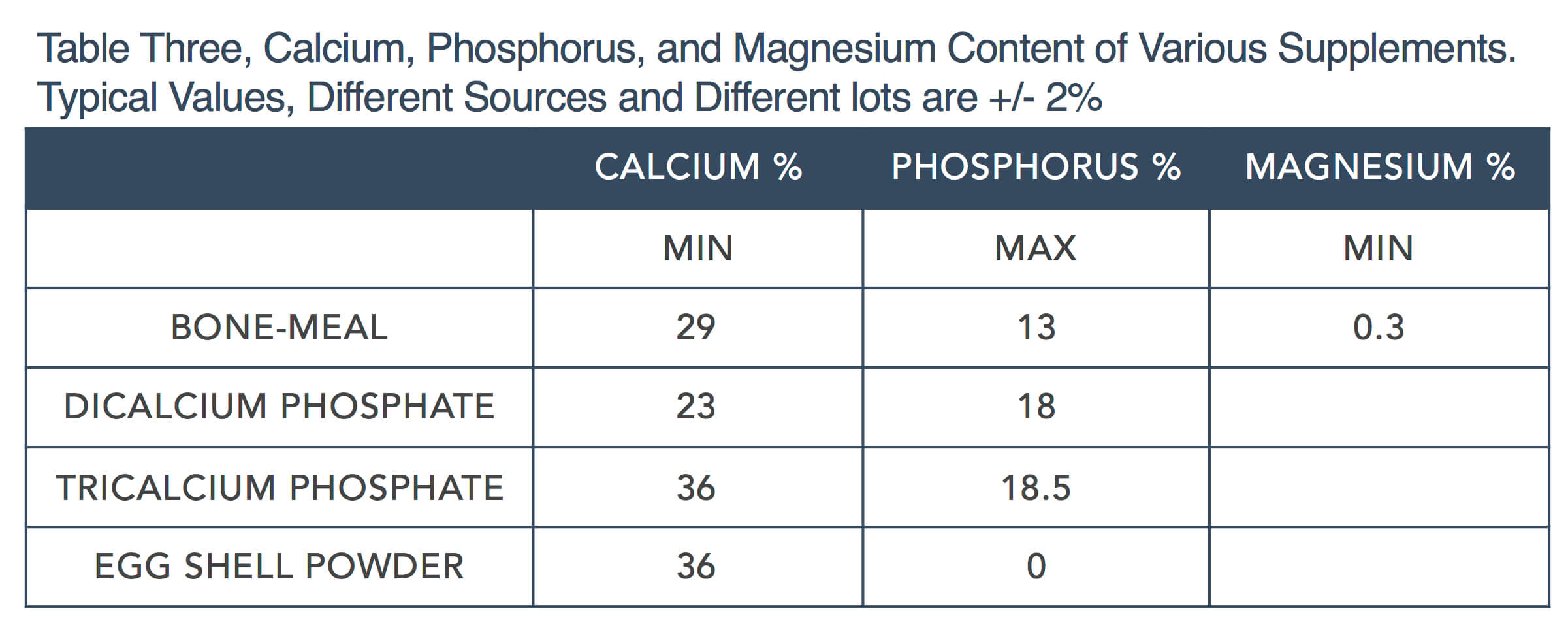
Technical note
Many readers have asked me to tell them how much Ca and P to add to per pound of recipe (“what % of the recipe is bone meal?”).
Sorry, I can only tell you on a caloric basis or per pound of 90% lean meat, but not on the percentage of the recipe. Here’s why: Looking at two similar recipes; both using 10 pounds of 90% lean ground beef, 2 pounds of organs, with hempseed and krill oil to balance the fats and canned pink salmon for vitamin D. The only difference – one recipe has vegetables, one does not.
* Recipe 1:
o 15.74-pound recipe with 3 pounds of vegetables (19% vegetables). Total kcal 10,000. To provide proper Ca and P for growth, we add 100 grams of bone meal, (about 1 gram per 100 kcal) or about 1.4% of the recipe.
* Recipe 2:
o Same recipe with no vegetables. It’s now a 12.7-pound recipe with 9600 kcal. To provide proper Ca and P, we add 96 grams of bone meal, again about 1 gram of bone meal per 100 kcal. On a percentage basis, though, this 96 g of bone meal is 1.64% of the recipe.
Vegetables add water, fiber, and micronutrients, but few calories. Therefore, one needs to add a lower percentage bone meal to those recipes with vegetables, than to those recipes with fewer vegetables. Confusing? Yes, that’s why I’ll state the guidelines per 1000 kcal.
The guidelines in more detail:
Ruminants (beef, bison, lamb)
I often use bone meal and other Ca and P sources (dicalcium phosphate) in my ruminant recipes. Why not real beef bones? Because it’s difficult, without testing every batch (and testing ground bones is fraught with grinding and testing problems), to know the Ca and P content of hard beef and bison bones. (See table 2). Feeding bones as the source of Ca and P, we don’t always know how much the dog ate. And, even if you do know how much the dog ate, the protein, fat, moisture, ash and Ca and P content vary tremendously – sometimes by a factor of 3. This is usually due to unknowns such as type of bone, time of year harvested, how much fat is left on it, when it was trimmed as well as other important factors.
As commercial formulator, I find it hard to deal with the unknowns and variability. Therefore, for my growth recipes, I use bone meal or other Ca and P sources. For adults, I don’t worry as much as I do for puppies, however, proper Ca and P is still essential.
Adult Dogs:
Meats: use 85% – 90% lean meats. Fattier meats do not have enough phosphorus for adult dogs, so, if using fattier meats (and I don’t recommend it), one must add a Ca and P source, even for adult dogs.
Add 3 grams, about one teaspoon, of egg shell or oyster shell powders, coral calcium, or other plant-based calcium sources per 1000 kcal. The calcium in egg shell and oyster shell powders, coral calcium, and plant-based calcium sources are in calcium carbonate form. See table 3.
Q: What is 1,000 kcal (Calories)?
A: The amount of Calories a typical 40-pound dog consumes in one day.
Ground beef, 1000 kcal
* 1 pound, 8.5 oz. (703 grams) 93% lean, raw
* 1 pound, 5 oz. (600g) 90% lean, raw
* 1 pound, 1 oz. (482g) 85% lean, raw
* 2/3rd pound (300g) 70% lean, raw
Puppy Growth:
Use 87.5 – 93% lean meats. Add 10 grams of typical bone meal per 1,000 kcal. For large and giant breed puppies, some veterinarians recommend using FEDIAF standards, which are lower in Ca and P than are present AAFCO standards. If your veterinarian and the dog’s breeder agree that you should use FEDIAF standards, add 8 g of typical bone meal (table 3) per 1000 kcal.
Bone-in poultry
With bone-in poultry recipes, we balance the calcium, phosphorus, fatty acids, and the protein / fat content when we choose the meats. As I show in my advanced formulation seminar, if one chooses just necks or backs with the skin and fat on, the amount of LA, an omega-6 fat, exceeds recommended maximums and therefore may be pro-inflammatory. If one chooses just necks and backs with the skin and fat removed, the amount of calcium in the diet exceeds AAFCO and FEDIAF maximums. The best approach for most bone-in poultry diets is the 50/50/50 guideline.
* 50% of the meat is boneless, skinless thigh meat with the separable fat removed
* 50% of the meat is bone-in necks or backs, with 50% of the skin and separable fat removed
Least Amount of Phosphorus/Protein for Dogs with Kidney Issues
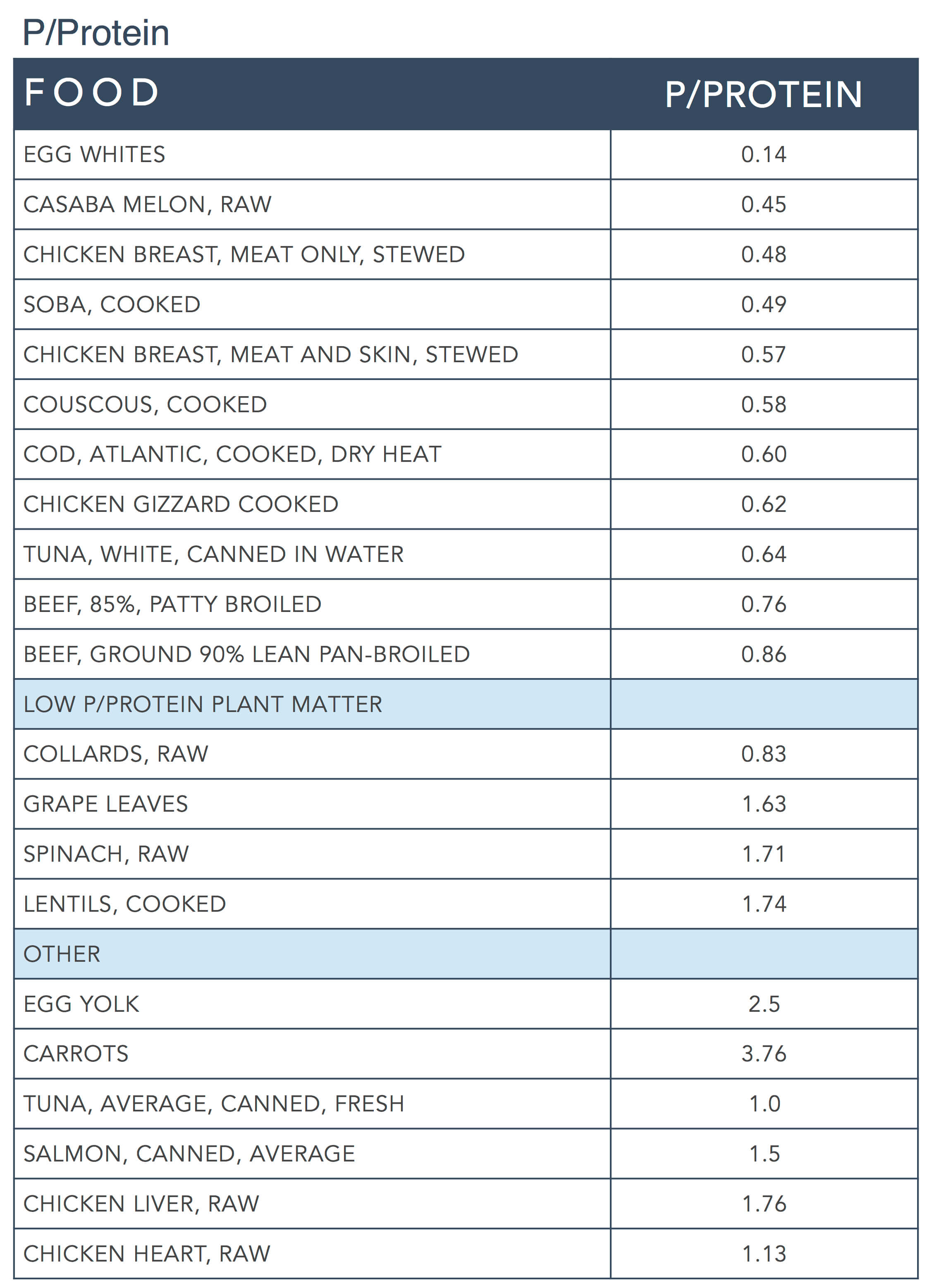

Steve Brown is a dog food formulator, researcher, and author on canine nutrition. In the 1990s he developed one of the leading low-calorie training treats, Charlee Bear® Dog Treats, as well as the first AAFCO-compliant raw dog food. Since 2003 he has focused on research and education. He is the author of two books on canine nutrition (See Spot Live Longer, now in its 8th printing, and Unlocking the Canine Ancestral Diet (Dogwise Publishing, 2010); and a 40-page booklet, See Spot Live Longer the ABC Way.



